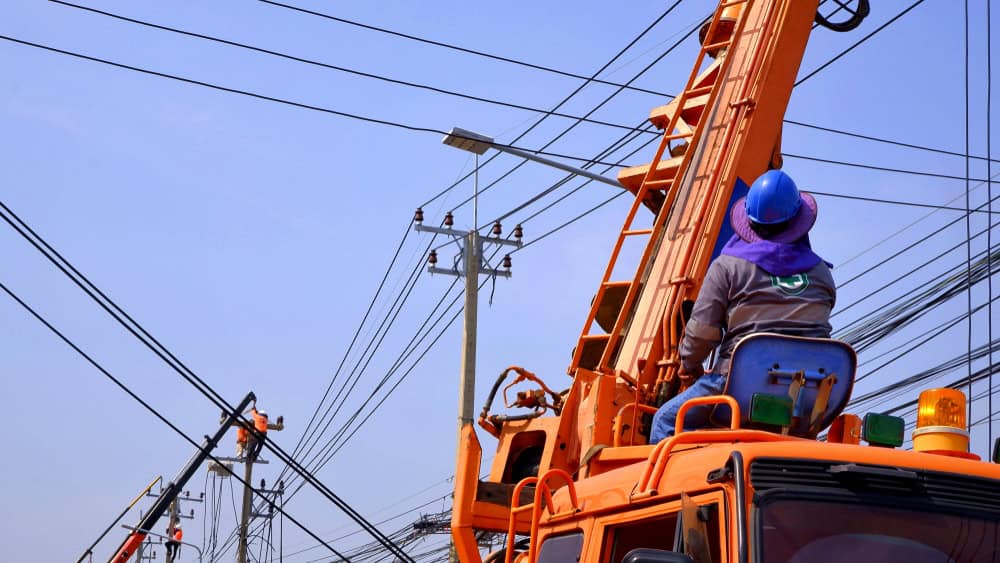Operating mobile cranes near overhead power lines is sometimes unavoidable in construction and repairs. Mobile crane operators must proceed with extra caution. If you need to move loads to and from a building beneath transmission lines or replace items on roadways with power lines running parallel to them, act with care. Even placing concrete traffic barriers during highway construction and maintenance might occur beneath existing powerlines and present the possibility of danger.
Be aware that powerline heights can vary. Visually inspect powerlines before commencing any activity or passing underneath them. You must know the height and voltage of the overhead powerlines in your work area and the height of your machinery in both the operating and transport positions. Having said that, don’t attempt to measure the height of overhead powerlines, as contact with them may cause severe injury or be potentially fatal.
Even a tiny mistake could lead to a fatal accident.
Here are United Crane Services’ top tips for operators using mobile cranes.
Maintain a safe distance
Maintaining a safe distance from overhead powerlines is essential when operating a crane hoist, line and boom.
Go slow
Maintaining a slower-than-usual speed gives greater control over your crane operations. It helps you avoid collisions with nearby power lines.
Ensure you have a signal person onsite to observe clearance and give timely warnings
Some crane operators can find their site visibility restricted by existing structures, machinery or trees. When concentrating on load lifting, possible obstacles, monitoring stress, and wind speed, observing the clearances can be challenging, too. Designating a signal person to guide you relieves the pressure and allows you to focus.
How to react if there is contact with the power lines
If you make contact with the power lines:
- Swing the mobile crane boom into the clear.
- If it’s necessary to leave the equipment, position your jump so your feet stay close together and hit the ground simultaneously.
- Once on the ground, walk clear of the unit.
- Stay away from the crane until the power lines have been de-energised.
Basic mobile crane operation safety
Identify and agree on permissible routes for mobile crane equipment based on the powerline’s location. In particular, familiarise yourself with the area and voltage of all overhead powerlines at the site before operating or working with any crane. Many accidents arise when operators deviate from established routes.
- Before performing any work near powerlines, identify all the hazards and set up appropriate control measures. Evaluate the job site, determining areas for material storage and the most suitable mobile crane placement during operations. Also, consider your mobile crane’s size and type.
- If powerlines cannot be de-energised in a work area, only operate mobile equipment in the area if you can maintain the safe minimum clearance.
- Where it is difficult for the mobile crane operator to maintain safe clearance by sight alone, choose a watcher or a person designated to observe and warn the operator before the equipment comes close to breaching the safe clearance limits.
- Before commencing crane operations near powerlines, notify the line owner (or authorised representative) and provide relevant information, such as type of equipment (including length of boom for cranes) and date, time and type of work involved.
- Train workers to recognise the hazards associated with high-voltage overhead powerlines and the proper techniques for rescuing persons or recovering equipment in contact with electrical energy.
How to proceed following mobile equipment contacting powerlines
If you contact overhead powerlines or a flash-over occurs between a live overhead powerline and a crane or other item of the mobile plant, follow the steps outlined below.
- Stop all work near the incident and summon help to isolate the powerline.
- Keep all personnel away from the mobile plant, ropes and load, as the equipment and ground around the machine could be energised. Be aware that fallen conductors (lines) could also whip around unexpectedly and catch you.
- If assistance is unavailable, attempt to break the machinery’s contact with the live overhead powerline by moving the jib or driving the machine clear.
- While typically, jumping from the affected plant while the powerline is still energised could result in serious injury, jumping may be necessary if there is a risk of imminent danger, such as fire. Leap clear of the plant and avoid simultaneous physical contact between the plant and the ground.
- Report the incident to management, any network authority and Resources Safety.
Communicate and Coordinate
To ensure safety when operating mobile cranes, ensure you maintain open communication with the team around you. It’s important to remember you have a shared goal and communication and coordination are essential.
United Crane Services – Committed to Crane Safety
At United Crane Services, we have built a name for ourselves by providing a positive safety culture, thorough attention to detail and a willingness to continuously improve our work practices to exceed health and safety regulations.
We implement a comprehensive machine maintenance regime, conducted by seasoned professionals to ensure our mobile crane hire fleet remains contemporary and safe. With United Crane Services, you know your crane will be up to the task and safe. We have several types of equipment available, so call us to discuss which mobile crane is suitable for you to hire.
Our goal to is ensure our clients get the job done quickly, keep within their project and budget and most importantly, get home safely to their families at the end of the day.
Our crane specialists are happy to help. Call us on +61 08 9250 4488

